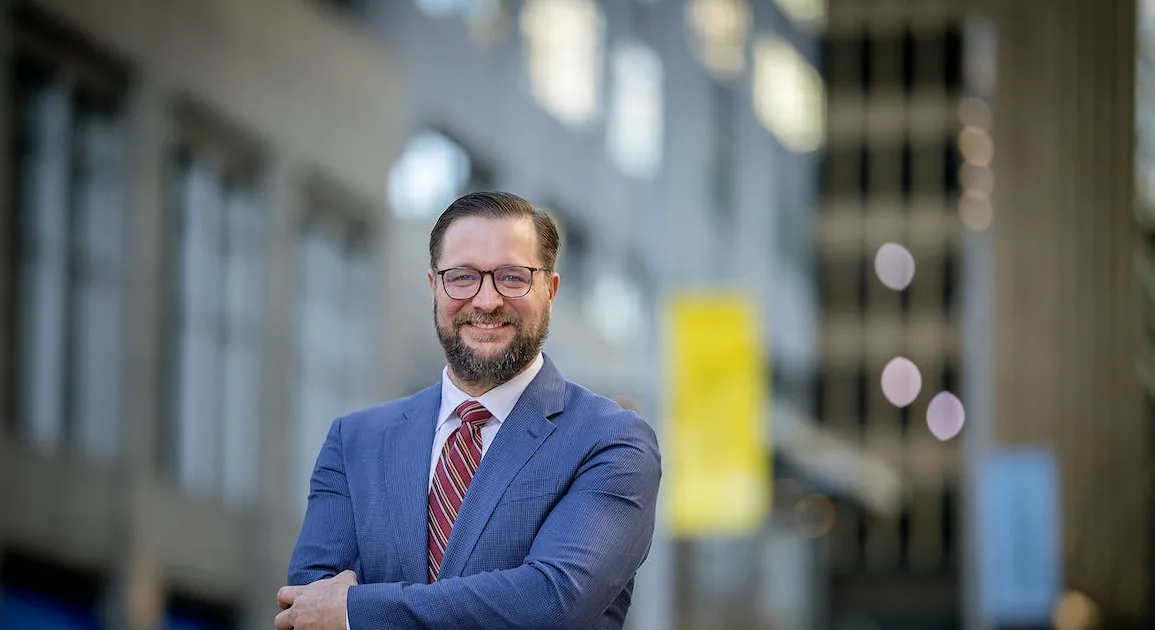
The newest downtown Minneapolis booster faces steep challenges.
Adam Duininck, 43, started Monday as president and chief executive of the Minneapolis Downtown Council and Minneapolis Downtown Improvement District. He takes the roles as Minneapolis, like many cities, is still regaining its footing after the pandemic emptied many offices, stores and hotels in the central business district.
The organization failed this year to raise enough money for its annual Holidazzle, once a grand parade attracting thousands downtown for multiple nights that was downsized to a winter festival in recent years.
“Even though we have big challenges ahead of us, I think there’s a tremendous amount of opportunity,” Duininck said.
Before replacing Steve Cramer, who retires Dec. 1, Duininck spent six years as director of governmental affairs at the North Central States Regional Council of Carpenters. He was chair of the Metropolitan Council regional planning agency from 2015-17.
Duininck shared his thoughts for the work ahead, edited for clarity and length.
How can the Downtown Council help attract more employees and visitors to downtown?
We’re looking at the incentives and amenities and other creative ways to draw people downtown. That’s how we got from employees coming downtown one or two days a week to now Tuesday to Thursday more consistently. We are now discussing how to expand employees coming downtown Monday through Friday.
Having more people downtown at work, at events downtown and to support local retail, such as at the Winter Makers Market at the Dayton’s Project, is what we need to turn around the narrative that downtown is not a safe place to be. The last year’s been a major improvement in downtown safety and we want to continue to build on that momentum.
What about Holidazzle, do you plan on bringing it back and how?
I hope to bring some kind of holiday festival back. An important part of our 2035 plan is how do we keep building on the events we’ve had? The Aquatennial has been enormously successful and so we want to execute that event well and learn some lessons from that. We can potentially look at something like the Loring Park Holidazzle or a downtown festival on Nicollet Mall.
What did you learn serving on Mayor Jacob Frey’s economic advisory group?
The biggest thing I learned there is how you can leverage lots of stakeholders from different sectors to buy into a common vision of the common good. The largest outcome from that work group was to focus on building a stronger African-American middle class in the city through economic development, through investments in housing. That sort of model of collaboration is exactly how I want to lead the Downtown Council, to think strategically and creatively about new partnerships.
What about the growing population of downtown residents — how do you view them?
Downtown residents are what helped downtown — and the retailers who stuck it out — get through the pandemic, frankly. They’ve poised us to do well. There’s a lot of opportunities for growth in these areas. Downtown is evolving. Areas like Downtown East look a lot different today than the last time we did our 10-year planning for the 2025 plan.
What about the North Loop, a booming residential and entertainment district, versus the quieter central business district?
Both areas are super important to downtown. We need a strong North Loop to keep growing and keep doing well. We need the central business district to continue to have more employees downtown and more activation that’s happening on a regular basis.
What is your favorite thing about downtown?
My favorite thing about downtown is its unique intersection of entertainment, hospitality, arts, theater, sports, and culture, all in one place.
Our downtown is at a critical moment in confronting challenges around safety and vitality but we have a determined, committed community who loves our downtown and will do what it takes to continue a strong recovery.



